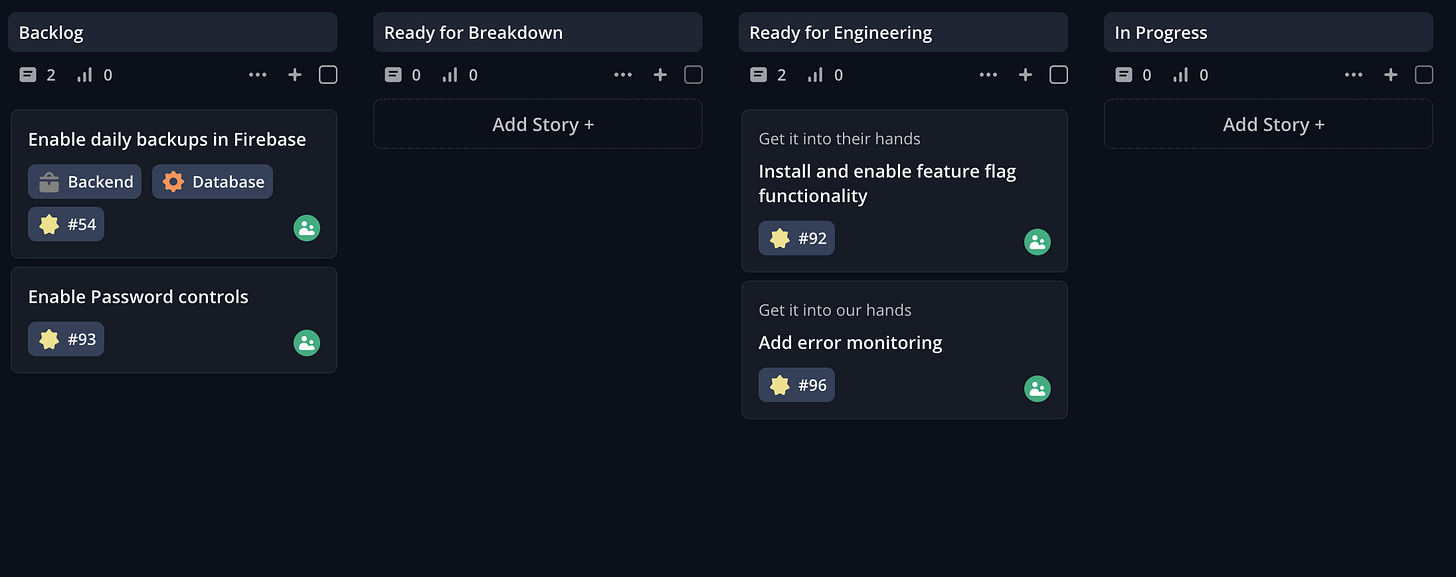When it comes to leverage in technology teams, there is no greater tool that I have found than the board.
But it must be approached with discipline.
Traditionally a physical board with stickies, it is now most commonly found used in a digital format.

The board should represent, as faithfully as possible, the current state of play for a team.
If you cannot accurately gauge, at a glance,
what’s recently been shipped,
what the current blockers are,
or what might need your input (for example, a code review or QA check),
then it isn’t doing its job.
A few rules of thumb that help achieve this:
1. Split columns between ‘Ready for’ and ‘In’
For example, rather than simply having a ‘Review’ column, have ‘Ready for Review’ and ‘In Review’. Ditto for Engineering, QA, etc. This helps highlight where the bottlenecks are and creates a greater sense of flow and progression as cards move across the board.
2. Be particular when it comes to assignees
Most board software allows you to assign at least one person to a card. Use this. If a ticket is in review but no-one’s name is on it, we’re in a state of limbo. Is this actually being worked on? If so, then whom can I check in with about it? Assignation ensures accountability and fosters transparency.
3. Map your processes
Every team is different. How they work will vary. The point at which their ownership ends, and they can consider their work ‘done’, might not be the same for a team shipping firmware, iOS apps, or websites. The board should reflect that.
Final thoughts
As we move towards increasingly autonomous AI workflows and agents, with engineers and non-engineers alike potentially managing their own small team of specialised AI co-workers, having an up-to-date source of truth that provides immediate visual feedback about the state of play on a given task will become even more important.
There’s never been a better time to master the board.



